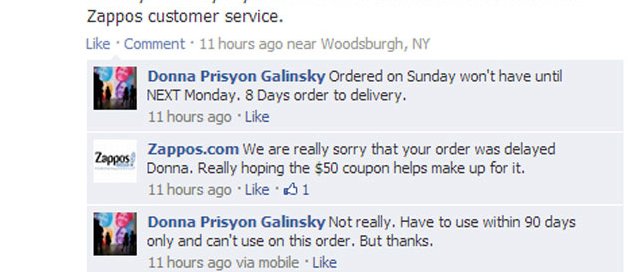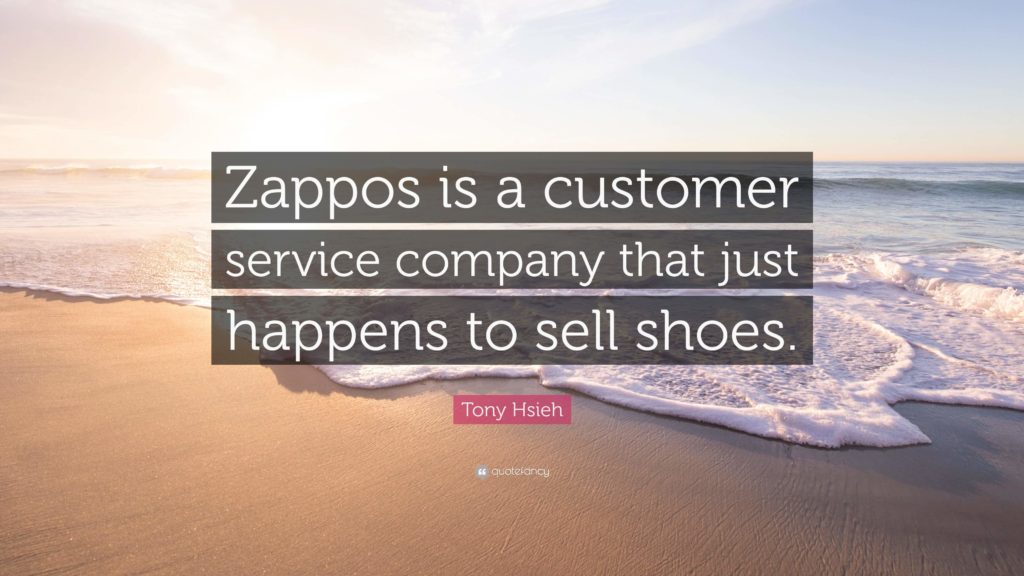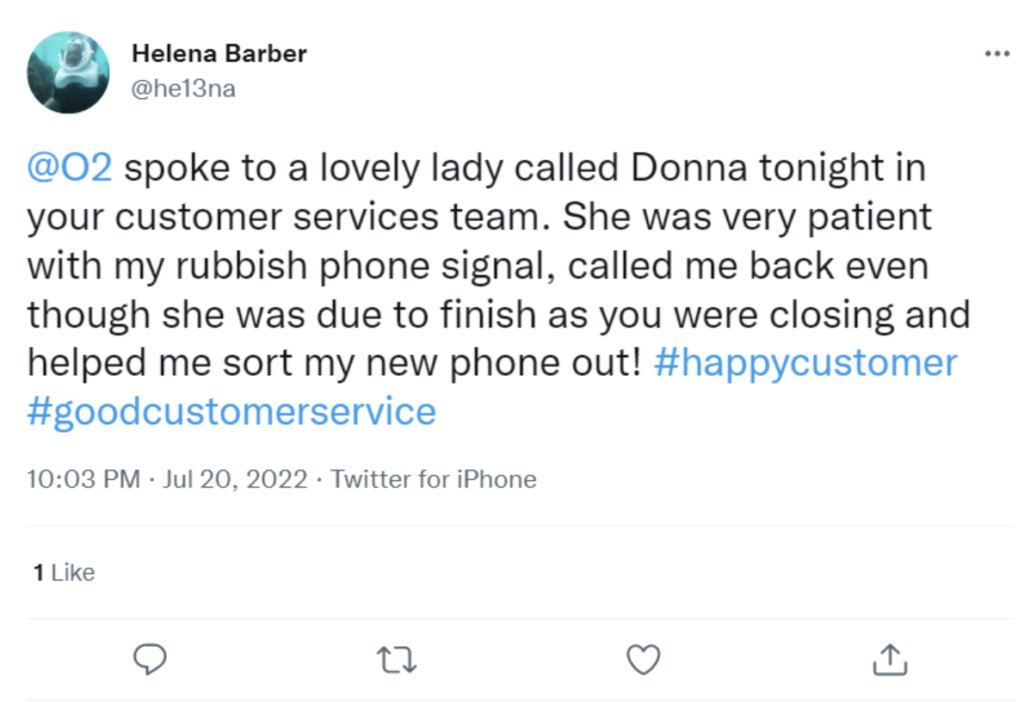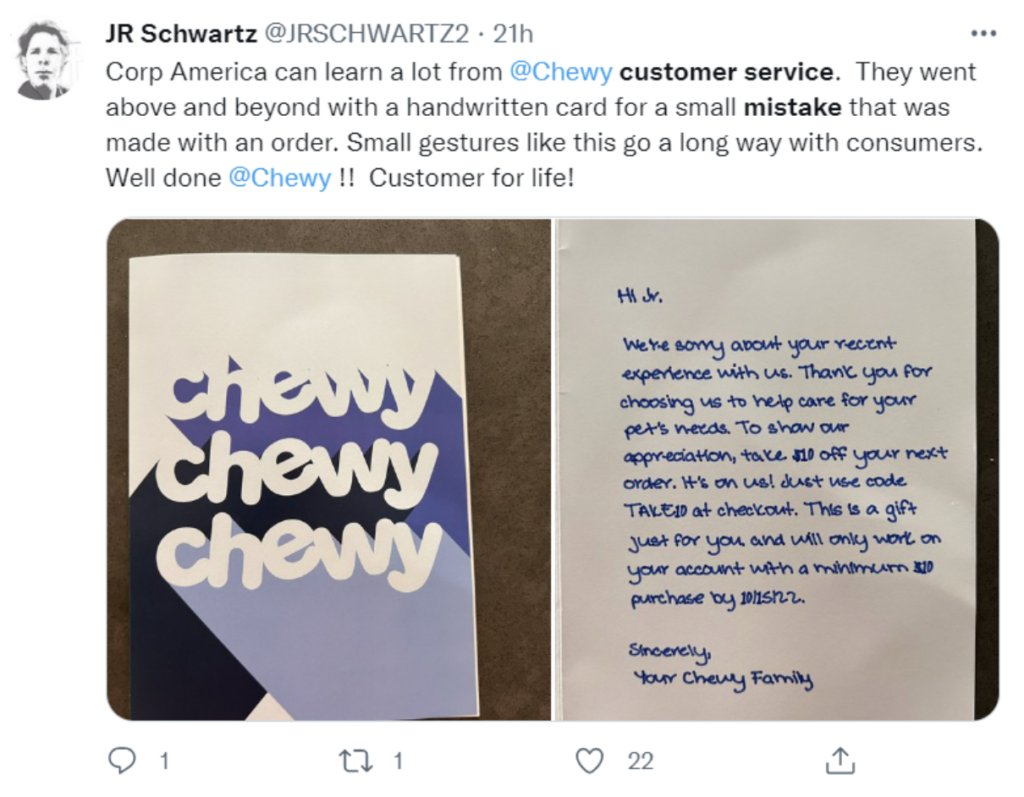5 Real-Life Scenarios of Legendary Customer Service [+ Bonus Examples]

Table of contents
Exceptional customer service is a hallmark of successful businesses, and it’s more than just a buzzword—it’s a fundamental aspect of building lasting relationships with customers. It involves fostering a customer-above-everything attitude among your employees at scale.
So, how do you take great customer service from being a nice-to-have to an all-important-prime-focus across your company?
Well, to truly understand the power of outstanding customer service and see how you can implement it in your own business, there’s no better way than diving into real-life customer service examples.
In this blog, we looked at five companies that live and breathe exceptional customer service on a daily basis.
We’ll share their best strategies on hiring for great customer service, guiding employees the right way, and the role of leaders in fostering customer-centricity.
Let’s dive in and check out some of the best real-life customer service examples.
Table of Contents
- What Does Excellent Customer Service Look Like?
- Why is it Important to Deliver Great Customer Service?
- Real-life Examples of Brands Excelling at Customer Support
- Bonus Tips To Inspire Lifelong Customer Loyalty
- Wrapping up: Great customer experiences are not a matter of chance
What Does Excellent Customer Service Look Like?
Excellent customer service involves providing assistance to customers in a way that meets or exceeds their expectations, fostering customer loyalty, and trust. It’s the combination of efficient processes and interpersonal interactions that result in positive customer experiences. Using customer service software can help ensure that these processes run smoothly.
Here are some of the core elements of excellent customer service:
- Understanding and Empathy: Recognizing the feelings and emotions of customers, demonstrating genuine concern for their needs, and showing empathy during interactions.
- Promptness and Accessibility: Responding to customer inquiries and feedback quickly, and being available across multiple channels, whether it’s phone, email, live chat, or social media.
- Reliability and Consistency: Offering consistent and dependable support ensures that customers know what to expect every time they reach out to you.
- Problem-solving: Addressing issues head-on, taking responsibility when things go wrong, and finding solutions to boost customer satisfaction.
- Personalized Experiences: Treating customers as individuals with unique needs and preferences, rather than just another ticket or transaction.
- Proactive Engagement: Anticipating potential issues and reaching out to customers before they become problems, or informing them of relevant updates and offers.
- Capturing Customer Feedback: Actively seeking and valuing customer feedback, and using it as a tool for continuous improvement.
- Empowerment of Frontline Employees: Providing staff with the authority and resources to resolve issues at the first point of contact, without unnecessary escalations.
You Might Also Like: The complete guide to customer service best practices
Why is it Important to Deliver Great Customer Service?
Delivering great customer service impacts both the immediate bottom line and the long-term growth of a business. Here are some key reasons why it’s crucial to offer top-notch customer service:
- Customer Retention: It’s often more cost-effective to retain existing customers than to acquire new ones. Great customer service ensures that customers continue to do business with a company, leading to increased lifetime value.
- Word of Mouth and Reputation: Satisfied customers are more likely to recommend a business to their friends and family. Positive word of mouth can be one of the most potent marketing tools, especially in the age of social media.
- Increased Sales: Happy customers are more likely to make repeat purchases and explore other products or services offered by the business.
You Might Also Like: How to create unforgettable customer service moments
Real-life Examples of Brands Excelling at Customer Support
Let’s take a look at some brands whose customer obsession has helped them stand out –
1. Zapier
Zapier’s obsession with customer support began when they had no customers or even a robust prototype.
In those early days, CEO Wade Foster lurked in community forums and reached out to customers who needed a product like Zapier’s. Through Skype calls, he’d help customers work with his barely functioning MVP, and iterate on their feedback.

Foster’s commitment to customer service was shaped by advice from Wufoo founder, Kevin Hale, who told him there were three types of companies: one with the highest quality product, one with the cheapest deals, and one with the best customer service.
As a startup founder, Foster knew which type of company he would build. He says in an interview:
We can’t be the best and we can’t be the cheapest, but we can definitely care the most, and so from day one, we thought “let’s get on Skype calls, let’s do things that might not scale right now, just so that we can make people really happy and really want to work with us.”
Today, Zapier has over 200 employees and $50 million in annual recurring revenue. But their focus on customer service remains laser-sharp. Here’s how they do it:
Customer support is everyone’s job
Every employee has to do customer support for four hours a week, whether they’re a marketer or an engineer. Their engineers work on customer support requests for a full week, on a rotating basis.
Interacting with customers first-hand helps the team build customer-focused products and services. The product team can gauge the usefulness of features, engineers are apprised of recurring problems, and the marketing team uncovers insights for product positioning.
Customer support skills is a hiring criteria
The focus on customer support also influences Zapier’s hiring process. This means if an engineer is great at their job, but it looks like they may come off as prickly to customers, they won’t make the cut at Zapier. They also vet if potential employees can write well; it’s important for them to be friendly and empathetic to their customers.
You might like: 17 must-have Customer Service Skills + How to develop them
Empathy is non-negotiable
Customer support team members often have to deliver bad news. A product unavailability, a feature that’s never going to be built, an expired trial. While bad news always upsets customers, the key for support reps is to do it in a way that reflects empathy and thoughtfulness.
To gauge whether an employee can deliver bad news to customers, Zapier asks questions such as, “say you and I are dating right now and you need to break up with me on this call… how would you do it?”
For companies still waiting for inspiration, Wade’s advice hits the mark:
Anybody can provide awesome customer service. You don’t have to be a rocket scientist to just be nice and be helpful.
Recommended Read: 9 Must-Have Customer Service Skills + How to Develop Them
2. Southwest Airlines
Southwest Airlines may be popular for being a low-cost carrier, but their customer service is equally legendary.
Herb Kellehher, the founder of Southwest Airlines, famously said:
“I tell my employees that we’re in the service business, and it’s incidental that we fly airplanes.”
Airlines are notorious for sub-par experiences, but Southwest routinely ranks among the top three carriers in the US. What sets them apart?
Here are a few ways Southwest nurtures a customer-first approach in its employees:
Treating employees like customers
As it turns out, the secret to great customer service is to, firstly, treat your employees well. Said Kelleher, “A motivated employee treats the customer well.”
Southwest CEO Gary Kelly gives weekly shout-outs to employees who demonstrate good customer service and also includes examples of empathetic engagements in internal videos. Employees’ enthusiasm for their job is evident in these testimonial videos where they talk about their job with fervor.
Placing employees above profit-making
A recent example of the airline’s commitment to their employees is their response to the Covid-19 crisis. At a time when most airlines are cutting costs and laying off employees, Southwest CEO told its employees:
“I want you all to know we will not furlough or layoff any Southwest employees on October 1 (when bailout funds expire),unlike our major competitors. Further, we have no intentions of seeking furloughs, layoffs, pay rate cuts, or benefits cuts through at least the end of this year.”
Further, he went on to explain how the company would use strong profits from 2019 to get the company through the tough period.
Leading by example
Leaders can take a cue from the airline’s founder, who routinely walked the talk when it came to customer service. He would often arrive at three in the morning to clean planes, and also assist with baggage unloading, so the aircraft would depart on time. A perfect example of leadership not only sermonizing about customer service, but backing it up with action.
In an industry where delays are the norm and customer experiences seldom accounted for, Southwest won customer loyalty simply by caring enough about them.

Taking a proactive approach
Another area Southwest Airlines stands out is in their proactive approach to customer strategy. Reaching out to a customer before they even have a chance to lodge a complaint is how you ensure your customers remember you and come back to you. Take a look at this example:
Southwest Airlines customer Michael tweeted how he had paid for wifi on the first leg of his flight and barely got 5 minutes of consistent network connectivity. Once he got home, he was going to email them about this but he found an email from Southwest Air already sitting in his inbox. Check out the screenshot below.
When you reach out to your customers before they can even raise a complaint, it shows that you’re looking out for them. This is a great way to turn a negative situation into a memorable customer experience.
3. Eventbrite
Eventbrite is an online ticketing website for live events. It launched in 2016 to staunch competition from existing players such as StubHub and Ticketmaster. Still, they carved a niche in the small events organizer market. Their differentiating factor: excellent customer service.
To ensure their partners and customers consistently receive the best quality services, they have a playbook for hiring and training employees.
In an interview with First Round, Dana Kilian, VP of customer service at Eventbrite, shared some practical advice:
Make a great first hire
Your first customer support hire must identify with the founder’s vision of what great customer service looks like. They should have a good balance of people and operation skills. Dana suggests asking questions like, “How will you inspire and motivate a team?” and “What service-level targets should we be tackling?” to get a sense of whether they’d be a good fit.
Provide balance and flexibility
While everyone on the Eventbrite team does customer support, there are no fixed times or days. They don’t follow scripts, and employees have the freedom to take support decisions.
Hire for success
A part of Eventbrite’s interview process for customer support employees is calling candidates and pretending to be a customer who needs step-by-step instruction to using the product. Even if the candidate does not have a ton of product knowledge, the hiring managers look for creativity and presence of mind.
In another version of this test, they present candidates with tricky customer situations to see if they’re able to pacify agitated customers, solve the problem, and take help from the company’s documentation, all the while maintaining a friendly front.
Having time-tested processes in place help you deliver consistent service, no matter how big you grow. As Dana says:
You want them (customers) to always know that if they call, they will get help from people who care.
4. Nordstorm
You’ve probably heard the famous Nordstrom tire story. If not, here’s a quick gist: In 1975, a man drove up to a Nordstrom store asking for a refund for tires he’d bought weeks ago at a tire shop that the retailer replaced. Even though the company had no obligation to pay the man, they still did, much to his delight. Today, this story is the most known example of good customer service.

This wasn’t a one-off, isolated incident. It’s one of many tales testament to Nordstrom’s excellent customer service.
To deliver delightful experiences on a regular basis, Nordstrom uses a combination of employee empowerment and an unwavering commitment to customers. Here are some lessons to glean from the much-loved retailer:
Prioritize customers before company policy
Customer service reps often fall back on company policies when faced with tricky decisions. More often than not, it leads to bad experiences and disappointment for customers. At Nordstrom, employees follow one policy: making the customer happy.
Famously, Nordstrom’s employee handbook read like this:
“Welcome to Nordstrom. We’re glad to have you with our Company. Our number one goal is to provide outstanding customer service. Set both your personal and professional goals high. We have great confidence in your ability to achieve them.
Nordstrom Rules: Rule #1: Use your best judgment in all situations. There will be no additional rules.”
To further encourage employees to prioritize customer experience and satisfaction above all else, the company’s leadership routinely endorsed these values. Said co-founder John Nordstrom, “If I’m a salesperson on the floor and I know that the people who own this place are committed to customer service, then I am free to find new ways to give great customer service. I know that I won’t be criticized for taking care of a customer. I will only be criticized if I don’t take care of a customer.’’
Go beyond your core service
Nordstrom may be a retailer for clothing and shoes, but it’s Local stores don’t just allow customers to return and pick up online purchases. While waiting for their purchases, shoppers can get a manicure/pedicure, tailor clothing with in-store seamstresses, and consult with in-house stylists. These services may be paid for, but they still help to enhance a customer’s overall experience with the retailer.
Other than providing add-on services, Nordstrom employees routinely go above and beyond to delight customers.
Here’s a sample of what employees routinely do:

Use customer service stories for onboarding
Nordstrom’s customer service stories not only earn them media mentions, but are an important part of inducting new employees.
Merely stating the importance of customer service is unhelpful, uninspiring, vague. Instead, hiring managers recount stories of employees who have exceeded customer expectations. For example, the story of an employee who gift-wrapped items purchased at Macy’s, or the employee who warmed up a customer’s car in the middle of a snowstorm. Such stories have a powerful way to make messages stick. New recruits use them as reference points to deliver new and unique services, and thus the cycle continues.
Nordstrom serves as the perfect example for both online and offline companies to provide superlative customer experiences, no matter the platform.
5. Zappos
The words “cut-throat competition” hardly justify the eCommerce landscape. Still, Zappos, an online retailer company for clothing and shoes, has managed to rise above competitors and build a memorable brand. Their success can be pinned to what is often a nightmare for most online retailers: customer service.

In their own words, Zappos’ commitment to customer service experience is, “obsessed, maniacal, radical, wow.” In a company blog post, they revealed some of their customer service strategy secrets:
Unlimited customer call times
Call times indicate customer support reps’ efficiency for most companies. Not for Zappos. Their support representatives are not bound by specific times or metrics when it comes to assisting customers. It may take a while to digest this, but the longest customer service call a Zappos employee handled was 10 hours and 51 minutes. The only aim is to solve their customers’ problems. No matter what!
Solutions + conversations
You know how most customer service representatives sound like they’d rather be doing something else? Zappos goes out of the way to ensure their reps are different. Says customer service trainer, Megan Petrini, “We want to distinguish the service experience for every customer, on each and every phone call.”
Zappos employees are free of scripts and textbook replies. Instead, they’re encouraged to develop personal connections by trying to understand how every customer feels. If they hear a dog in the background, they’ll chat about pets. If they can gauge a caller is stressed, they’ll ask if they can help.
Customer service conversations at Zappos often comprise a gamut of topics other than the usual exchange, order, and returns requests. Kids, sports, current events; employees discuss anything that helps them forge good customer relationships.
Their founder Tony Hsieh said in an interview:

24/7 availability
While most companies have timings for customer support, Zappos employees are available to take customer calls, no matter what time or day. Unsurprisingly, employees are not in a rush to get off the phone because their shift has ended. Where most call centers have 80% occupancy, Zappos prefers to keep their call centers overstuffed and run at 60-70% occupancy. More customer support reps also enable more personal conversations and less focus on call duration.
Training and empowerment
The Zappos customer service team, called the Customer Loyalty Team, is trained for six weeks before they actually start handling customer issues. At the end of this training period, they offer employees a month’s salary to quit, if they feel they won’t be able to live up to Zappos’ values on customer service.
The lengthy training period does not equal excessive control over how employees deal with customers. In fact, employees have full freedom to accept special-case returns, offer refunds, and pay for damages.
Thanks to the lack of red tape around customer support, employees often deliver “Wow” moments to customers such as upgrading shipping to get shoes delivered for an occasion, sending a care package to a soldier in Afghanistan, and gifting Get Well Soon flowers to a customer’s ailing mother.
While on the face of it, Zappos’ customer service policies seem to cost them dear, they also help Zappos earn a loyal customer base in return. For any business, happy customers can only be a good thing.
Recommended Read: 12 Brilliant Customer Service Training Games
Bonus Tips To Inspire Lifelong Customer Loyalty
Check out these 4 bonus tips that you can implement when providing customer support, to inspire your customers to stick around for the long run.
1. Empower your employees as much as your customers
A top-notch customer service environment is just as much about empowering your employees as your customers. Exceptional customer service on the front end of your business is only viable when there’s a great work environment backstage – happy employees create happy customers.
Treating employees exceptionally well can bring about a significant return on investment. A news report by Gallup shows that brands that promote employee empowerment are 21% more profitable than those that don’t.
So, try to incentivize a customer-first mindset amongst your customer service reps and employees and empower them to practice it.

The critical takeaway? Employee experience determines customer experience in many cases. Ensure to empower employees to go the extra mile.
2. Stand out from the crowd
If your business does something unique, it’s not too long before your competitors copy it.
Other businesses can replicate, lower your prices, or offer a discount, but providing excellent customer service is difficult to replicate.
Stand out from the crowd by caring about your customers. Empathize and be genuine in your concerns.
Look for ways to make customer interactions just a little bit better. Small gestures, such as walking customers to the door or finding a chair for someone in poor health, show that you care and goes a long way in improving their in-store experience.

It’s a beautiful act of kindness.
This wasn’t a ploy to garner attention on social media.
It was genuine. And it helped Royal Mail stand out!
4. Provide quick responses
Customer service response times are getting slower.
Almost 53% of customers want their queries resolved within a day. Yet 3 out of 4 customers get frustrated by long waiting times and having to repeat questions multiple times – as noted in our exclusive report, ‘The State of Customer Support.’
Make customer satisfaction a priority and improve customer engagement. The key to successful customer service is acting on customer feedback as swiftly as possible. Customers with poor customer service want issues resolved quickly, ideally in one swift transaction.

Speed is a competitive strategy that separates you from competitors when offering excellent customer service.
6. Admit when you’ve made a mistake
We all make mistakes.
The good news is that 74% of people are willing to forgive a company for its mistake. Although admitting an error can affect your ego, it is an essential customer service skill that can help strengthen customer relationships.
Customers’ expectations are rising, and they prefer brand interactions to feel authentic and personal. Admitting that you have made a mistake and saying “sorry,” for example, can build trust.

They made a small mistake, fixed it, and sent a letter of apology.
And in JR’s own words – he’s now a customer for life.
Encourage your customer service agents to recognize and respond to not just the good but also the bad experiences. Taking responsibility is the bottom line to driving loyalty.
Wrapping up: Great customer experiences are not a matter of chance
When customer service is baked into a company’s fundamental culture, great customer experience becomes the rule, not the exception.
Just as honesty, accountability, and openness take time to foster, customer-centricity is nurtured over time too. As with any lasting transformation, small, incremental changes make all the difference.
There are a few common themes running across companies with stellar customer service: hiring for great customer service, providing both flexibility and autonomy, and empowering teams to go the extra mile.
To take these from theory to practice, company leadership must ask the right questions while hiring new employees, emphasize customer experience during training and onboarding, celebrate exceptional customer service, and most importantly, lead by example.

































